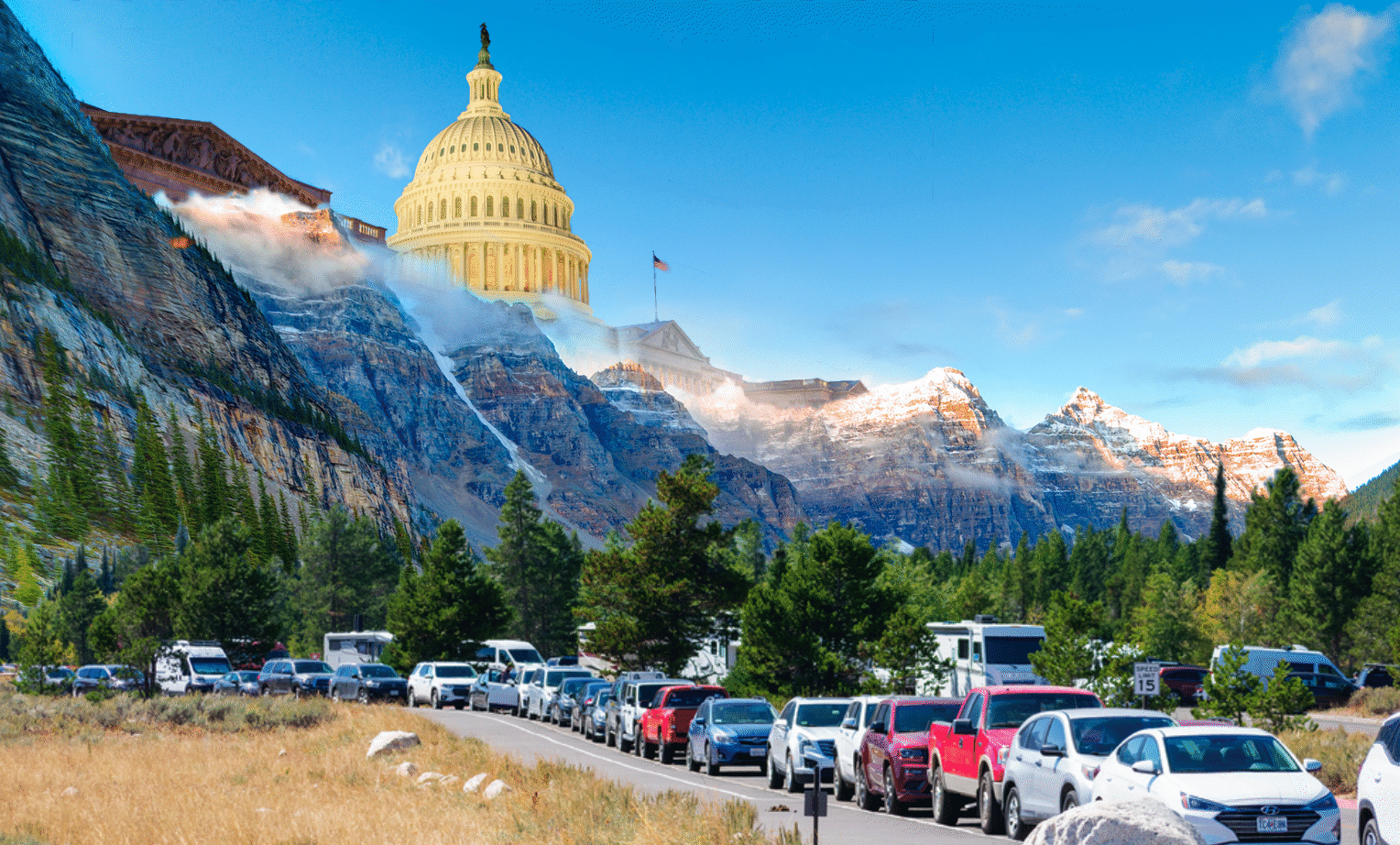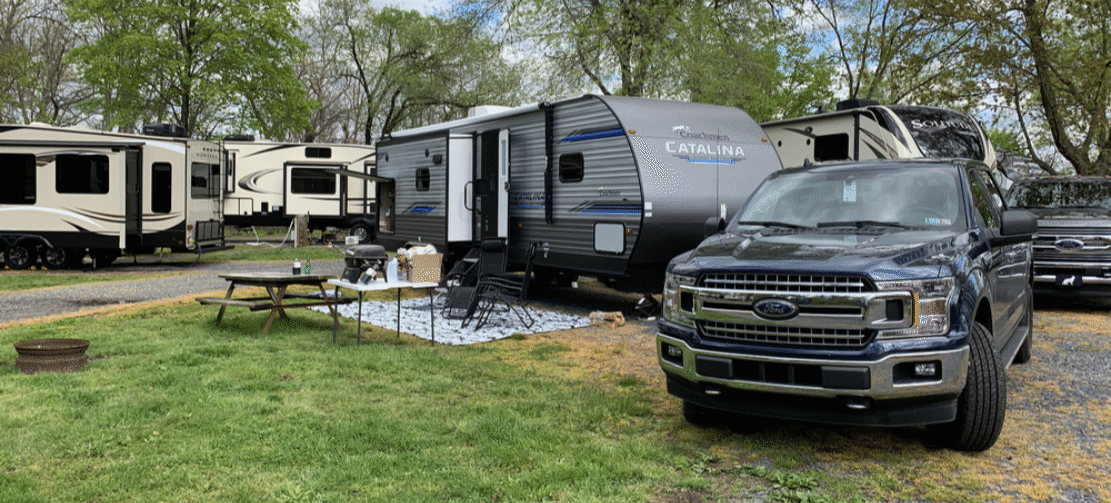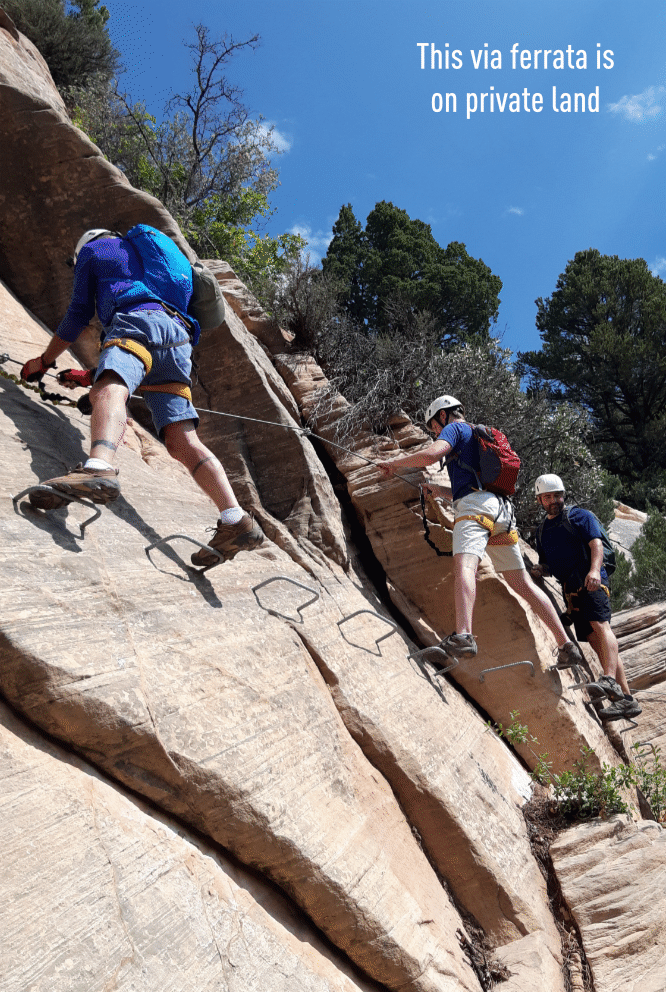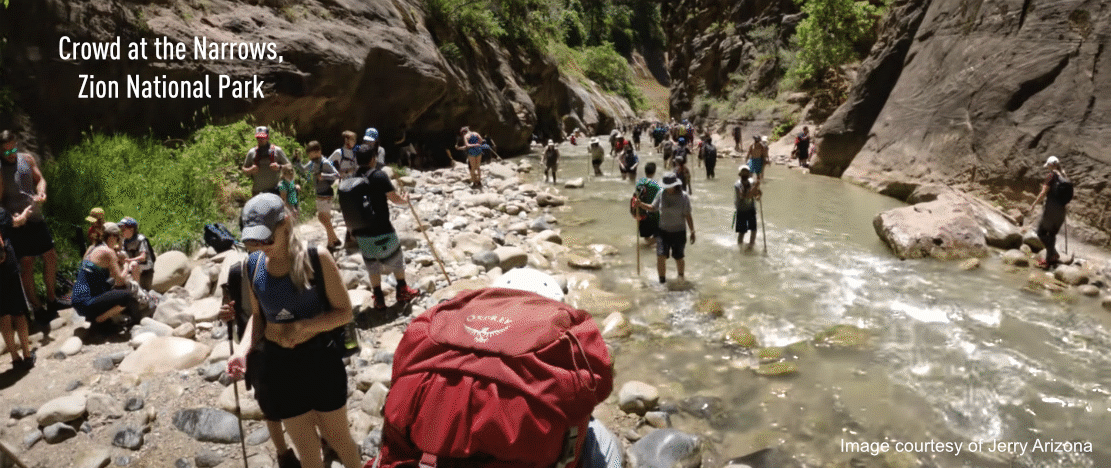
AT ONE POLE OF THE PUBLIC LAND DEBATE are those who would like to shut down all access except for an enlightened few. At the other pole are those who want to sell it all off, or at least totally deregulate logging, drilling, mining, grazing, and development on those lands. We boonrockers are somewhere in the middle, favoring recreational access while also preserving the land.
Let me state my personal biases. I want greater access for those who don’t mistreat the land, who respect and cherish it, and who minimize their impact upon it. (Ah, if only there were a way to filter out the destructive people.) I believe more people will value public land if they have personal experience with it, but, selfishly, I don’t want them clogging up the places I want to enjoy.
As we know, outdoor recreation has been booming. RV manufacturers can’t keep up with demand. The most popular National Parks are now requiring reservations just to enter. Public and private campgrounds are booked full, seemingly until the end of time. Favorite trails have become as crowded as Manhattan sidewalks. What can be done?
During the past few years, local and regional public land agencies have taken actions—temporary or permanent—they believe help maintain a balance of competing interests spread along the Shut-It-Down/Sell-It-All spectrum.
Fixing What’s Broken
In the summer of 2020 Congress passed the Great American Outdoors Act. Among other things, it allocated $6.5 billion to the Park Service to put a dent in nearly $12 billion worth of long-deferred maintenance and repair of “campgrounds, roads, bridges, visitor centers, parking lots, trails, water and electrical systems, and more.” My reaction was favorable. Sure, get existing infrastructure back in shape. If that’s what actually ends up happening.
Now there’s a new bill working its way through Congress: The Outdoor Recreation Act. Its claimed purpose is:
To improve recreation opportunities on, and facilitate greater access to, Federal public land, and for other purposes.
Sounds good, right? More recreational access! Yay! But the bill is sponsored by Senator Joe “Big Coal’s Servant” Manchin, so I have to be suspicious of the “other purposes,” especially since there seems to be early bipartisan support. That usually means there’s something in there for everyone—perhaps even the Sell-It-All folks, or at least the How-Can-We-Make-a Buck-from-This-Land-That’s-Just-Sitting-There interests.

What’s in the Outdoor Recreation Act?
I’ve slogged through the bill S. 3266 (as it currently stands) and here’s my takeaway. “Improve recreation opportunities” means developing more facilities in more locations. Roads, trails, campgrounds, visitor centers, restrooms, stores, internet, and so on.
It calls for the Departments of Agriculture (Forest Service) and Interior (Park Service and BLM) to conduct an Inventory and Assessment to “identify underutilized locations that are suitable for developing, expanding, or enhancing recreation use; and select additional high-value recreation resources at which to encourage recreation use:”
INVENTORY AND ASSESSMENT.—
(1) IN GENERAL.—In developing or revising a land management plan, the Secretary concerned shall conduct, using public outreach, an inventory and assessment of recreation resources for the Federal land subject to the land management plan.
(2) UNIQUE RECREATION VALUES.—An inventory and assessment conducted under paragraph (1) shall recognize any unique recreation values and uses of each landscape that make a landscape, or a portion of a landscape, desirable for a particular type of recreation opportunity; and points of concentrated use by recreationists.
Whether that’s good or bad depends on the political and business forces in play when decisions are being made. It might be a net positive thing, easing the burden on popular destinations by spreading “recreationists” into other areas. They’ve been trying this in Utah via media reminding vacationers there is more to see and do than the Big 5. It might mean those special places few know about and few visit simply have the dirt road maintained more often. But I suspect the idea is to turn those places into tourist attractions.
Reinforcing my suspicion that the latter is more likely, S. 3266 would also provide infrastructure improvements for communities adjacent to recreation areas so they could handle the influx of visitors. (And make more money.)
And pretty much confirming my worst fears, all this development will be done with private-public partnerships. The Number 1 Concern (actually, the only concern) of the private half of those partnerships is profitability. The larger the project to construct and operate, the more profit to be made. “Hey, if we’re spending all this money to put in paved roads, there should be more than just a pretty view at the end. There need to be as many ways to generate revenue as possible. Oh, and (the magic word that justifies all boondoggles) JOBS!”
Furthermore, as with any bill, various special interests will insert amendments. The virgin bill already includes a few that seem oddly specific. One would eliminate some fees for guides and outfitters. There’s one that promotes shooting ranges. Another would expand the installation of permanent climbing anchors, like via ferrata step-and-cable systems. And there’s the plan to expand broadband internet to recreation sites and gateway towns that don’t have it because of geographic challenges, low population and economic distress. Like Senator Manchin’s West Virginia, for example.

So, yeah, this bill looks like a big plan to “pave paradise and put up a parking lot / with a pink hotel, a boutique and a swinging hot spot.” And a shooting range, a zip line, and Jeep tours. Hey, but at lest there’s restrooms and internet.
Zion Narrows photo by Jerry Arizona. Follow his hiking adventures on his YouTube channel.


This is America, follow the money.
Absolutely true!
They put in a gate and charge money to get in. Now only a few people come and pay the fees that just about pay the salary of the gate keeper. So It’s costs money just to give a person a job. You can’t get in or out after hours. I’ve seen the county do this to a favorite fishing spot. Somehow, and I don’t know how, the guard shack burned down. Now it’s back to free access and no gate barring entrance at off hours, like when fishermen show up at dawn.
Thanks for trudging through the political mud as a heart driven, grass roots lobbyist. I am always suspect of special public funded mandates that duplicate what part of the current budgeting dictates. Local agricultural specialists (Forest Rangers) already manage their districts to a highest, best use. Sometimes weighing heavy on lumber production, or featuring recreation, or favoring specific wildlife support. Usually some combination of all. Most do a great job based on their available resources.
The efforts from those of US who care, by picking up a bag or two of trash at each site, not rolling through rutted or sensitive areas or clean up a paperwork mess being generated by politicians all deserve recognition and celebration!
Thank You!
Sadly enough. Trash and over use is one of the biggest issues. And it involves those who opt for places not developed for camping. The old adage that had leave no trace is lost on folks who not only trash the forest but also trash the cities.
Right now all of Arizona is under fire restrictions. Seems many campers think not having a fire means they are not camping. I can’t count the times I handed out tickets for a open wood fire, or other laws broken. Stupidest thing I’ve seen is cutting a live tree by a boy scout master teaching scouts how to cut a live tree.
It causes rules to be made in a forest where it hurts those who love the land and leaves no trace. But issues where they made the rule and thinking it was only one person doing these things, doesn’t address the hundreds of other violations doing the same thing. I’ve had to work as the only officer covering thousands of acres in Coconino forest.
Then we have those who do things mainly by not knowing a law.
It’s not up to each forest to go around saying hey folks your 100 count gathering is against the law. It’s something rainbow family has fought for years. But it still stands as a valid law. I’ll say right of the top rainbow folks leave a forest area sometime better than it was when they came.
That doesn’t address the other groups whether it be boy scouts, atv rallies and even van builds. Bob could step in on that one. So yes many not knowing how to get the information to see if what they do is legal is an issue. Camping in one spot for weeks on end happens, but is also a legal issue. Like those who have been to quarzsite know hopping back and forth between free camping areas is limited to a certain amount of time. Some get caught, some do not. Same thing in a forest, getting a vehicle to a spot all by itself might catch you doing it illegally by not using existing roads and making your own road to get their.
So much to know and so little time to get the info. Best thing to do is stop at a ranger station and ask. Try not to think one law is the same in all forests, in a way it is, but they may have tweaked it a bit to fit the area they manage.
We all have phones, and many have even more. If in doubt ask. Do not think you know it all. That never works out well.
The Forest Service has been waging a war on public access by closing FS roads and blocking long used access paths. Many western communities have been fighting this for years. So maybe this is an attempt to reverse some of that.
I’d feel better if it were sponsored by a western senator not Manchin (who I generally like). Eastern US does not have much access in the first place
BTW the climbing anchors is a good idea, many popular climbing areas often have these unofficially installed. Having each climber install their own anchors leads to the situation found at Yosemite walls. They look like they’ve been machine gunned since thousands of climbers over 7 decades installed their own anchors and used their own pitons.
This has nothing to do with zip lines.
Thank you for this informative article. And thank you for your good work.
This truly may be as you say, “pave paradise…”
I remember when, for instance, Mt. Rainier National park used to be almost completely wild. Then they actually paved Paradise. It became the first destination. A lodge with a snack bar and a gift shop and rest rooms.
I remember when my dogs were welcome there. But no longer. You can’t leave them in the car of course, but they’re no longer allowed on the trails, even leashed.
I can understand the environmental impact stuff, but the greater impact is the development that has turned the park into a bustling metropolis.
I am afraid that this is the fate of all natural lands, which eventually will be available only to the wealthy few.
I am about to end my 12-year isolation (living in a pre-running RV) and, with rv fixed, about to go out into the world once again to spend probably the final years of my life seeking out and sitting in nature.
From what I’ve seen, my fear is there will be none left by the time I finally get there.
Thank you so much for sharing this info. I was unaware of the bill. I appreciate you taking the time to pour through it for us. Eventually this year or next, I will be leaving, headed west to see some of this beautiful country before it is paved over. So much has already been lost under the concrete. I can’t even use the telescope my daughter bought me where I live because of the city lights making it too bright. I grew up in a very small town and at night we would go out and lay on a blanket and star gaze. One of the most amazing experiences in life!
You have almost single-handedly been responsable for van life to explode into this enormous influx of van dwellers peppering the countryside. And in my 5 years of travel I’ve experienced the irresponsible behavior of many many of the people you have motivated to take on this way of life,,,,,, So there’s that!!! So in reality you are one of the reasons we’re here in this pickle. Bob they don’t need your help to pave paradise they’ve been doing if for many many years.
Not everyone who lives this way of life trashes the places we go, but I also don’t see anything being done to help those of us who are disabled, can’t get decent jobs, or the homeless due to ever rising cost of living, so where else do you expect us to go when everyone has this attitude of “not in our parks, not in my city “ everywhere we look, somebody owns that piece of land or a government owns it, yet people cry we need to help the homeless, elderly, disabled, while at the same time look down on us as less than humans and treat us like dog crap, IT IS NOT OUR FAULT for becoming van dwellers and nomadic, the fact you people got this attitude towards us is disgusting to me, one day you may end up being in our shoes, probably not too far in ye future, then you’re gonna see just how hard this life really is when you run into people like you who couldn’t give a rip about you and tell you to get out, scram, beat it, yet where can you go?
I see both sides. Those exploiting “vanlife” for fun and profit bear some responsibility for overuse, but those forced into the lifestyle shouldn’t be blamed.
Bob promotes it both as a desirable lifestyle for some personality types, and as a lifeboat for economic refugees. We need an economy and public lands policy where everyone who desires to camp full time can, and no one who doesn’t want to is forced to.
A fee for full-time dispersed camping would be fair. Give everyone 30 days per year free, to accommodate working people’s weekends and vacations. More than 30 days per year would require an annual permit – say $300 (less than a dollar per day). The fees would be used to expand access with more spur roads and campsites, perhaps amenities like vault toilets and trash receptacles, and more enforcement and patrols.
Those who use dispersed areas disproportionately should pay something, especially since most pay no property taxes anywhere. It would also end the silly games between full-timers and rangers about “residing on public lands”.